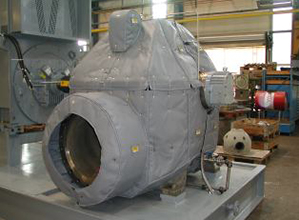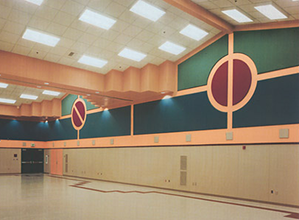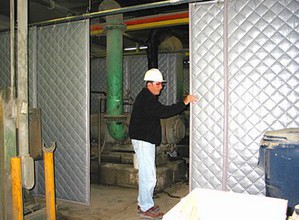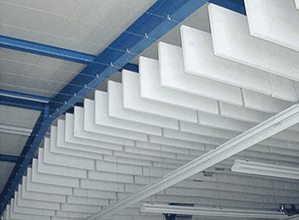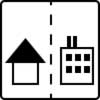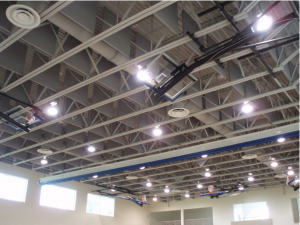Echo and Reverberation Time
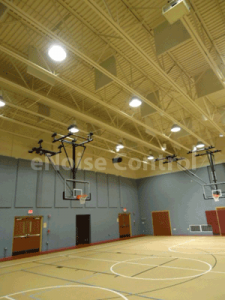 At eNoise Control, we often speak to clients about echo, reverberation time, and acoustics in their gym, multi-purpose room, or cafeteria. Common problems are speech intelligibility, too loud, too noisy, and inability to hear the PA system. The issue is that they have a room that is constructed of hard, flat surfaces that reflect sound. When people enter the space, the sound they generate reflects off these surfaces and makes the room louder. The echo or slap-back makes it difficult to understand speech. The main problem is that the room has very little sound absorption in the space.
At eNoise Control, we often speak to clients about echo, reverberation time, and acoustics in their gym, multi-purpose room, or cafeteria. Common problems are speech intelligibility, too loud, too noisy, and inability to hear the PA system. The issue is that they have a room that is constructed of hard, flat surfaces that reflect sound. When people enter the space, the sound they generate reflects off these surfaces and makes the room louder. The echo or slap-back makes it difficult to understand speech. The main problem is that the room has very little sound absorption in the space.
Sound Absorption
Sound absorption is a soft, porous, open-celled material such as foam sheets, fiberglass panels, or baffles. These materials reduce the reflection of sound waves off of hard surfaces. The sound absorption efficiency is rated by an “NRC” number, or Noise Reduction Coefficient. The HIGHER the NRC rating, the more efficient the product is at absorbing noise. NRC is a sound absorption rating. The rating measures a percentage of how much sound will not be reflected from its source. Based on a range of .05 to 1.0, where an NRC rating of 1.0 means that ALL of the sound energy that hits the product passes through it and therefore does not bounce back to its source. A rating of .60 would reflect 40% of the sound back to the source and let 60% of the noise pass through it.
Reverberation Time
You may have heard the term reverberation time used in reference to a space. In an enclosed environment, sound can continue to reflect for a period of time after a source has stopped emitting sound. This prolongation of sound is called reverberation. Reverberation time (RT60) is defined as the time required, in seconds, for the average sound in a room to decrease by 60 decibels after a source stops generating sound. Reverberation time is the primary descriptor of an acoustic environment. A space with a long reverberation time is referred to as a “live” environment. When sound dies out quickly within a space, it is referred to as an acoustically “dead” environment. An optimum reverberation time depends highly on the use of the space. For example, speech is best understood within a “dead” environment. Music can be enhanced within a “live” environment as the notes blend together. Different styles of music will also require different reverberation times.
If you have more questions about reverberation time, call an eNoise Control representative. We can help you understand how to improve the sound quality in your multi-purpose space.
